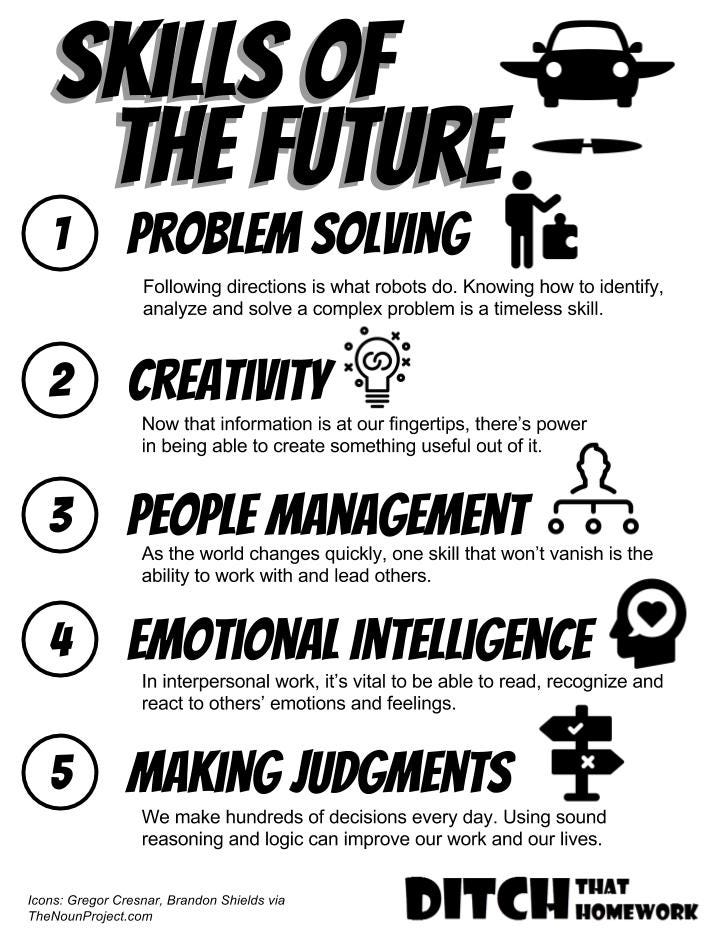Matt Miller is an educator, blogger, and author. After trying the traditional “teach by the textbook” method for several years, he launched into a textbook-less path where learning activities were infused with technology and often custom-produced for his students. For over a decade, he brought technology-first learning to his classroom and today, he trains teachers how to teach more effectively with tech through workshops, at conferences and more.
We caught up with Matt to learn more about his approach to teaching with tech and some tips for using icons to enhance learning.
Hi Matt! Tell us a little about yourself — how did you get to where you are today?

I am a newspaper reporter turned educator! I went back to college after a whopping three months in professional journalism to become a high school Spanish teacher. After teaching for a few years, I realized my textbooks weren’t helping my students reach our big goal: fluent conversational Spanish. So I started trying new things — storytelling, technology, etc. — until I didn’t need them anymore. Now, after having taught 11 years in public schools, I train teachers on effective ways to teach with technology. I’m also the author of three books (with a fourth coming in May).
What first got you interested in bringing technology to the classroom and what are some of your favorite EdTech tools?
I’ve always been fascinated with gadgets and technology. As a child, I dabbled in BASIC programming. As a college student, I took class notes on a Palm Pilot. It was natural to incorporate tech into my classes. Tech is best used in education when it amplifies learning, letting us do unique things we couldn’t do without the technology. I’m a big fan of Google and Microsoft tools for learning. I also love Flipgrid, a free video response tool that’s a lot of fun.
You wrote a popular book called “Ditch That Textbook” — can you tell us more about the DITCH acronym and what led you to write your book?
I wrote the book — and my blog, DitchThatTextbook.com — in response to a question I kept asking in my classroom. “If quality teaching is more than marching chapter by chapter through a textbook, what does that look like?” My books, blog, and other resources seek to find answers to that question every day.
DITCH is an approach to teaching and learning that I used in my own classroom:
- D: Different
Making your class unique from every other class students attend - I: Innovative
Trying new teaching techniques to engage students - T: Tech-laden
Adding tech in meaningful ways to improve learning - C: Creative
Creating “unique ideas that have value” (Sir Ken Robinson) in the classroom - H: Hands-on
Letting students learn by doing instead of telling them
Where do you find inspiration and what are you most excited about right now in education?
I find inspiration in lots of places … most of which are full of teachers. I’m a big fan of using Twitter to interact with other educators all over the world, to swap ideas freely and to provide support — there’s a huge community of educators who interact via Twitter all the time. I also love talking to educators at conferences and at schools.
I’m most excited about when technology intersects with good, sound teaching to create memorable learning. Technology is a catalyst, but without an understanding of pedagogy and how the brain learns, it can be just another flashy toy. Lots of educators are combining the two in powerful, innovative ways. That gives me encouragement for the future of education.
Visual note taking is a tactic that’s growing in popularity. What is Sketchnoting and why is it beneficial?
I love sketchnoting! Sketchnoting is the practice of mixing text and hand-drawn images to capture ideas. It’s very brain friendly. There’s lots of research that backs it up, including dual coding theory and picture superiority effect. Because the brain encodes images and text differently, when you learn something using both, it’s stickier in the brain for long-term learning. Sketchnoting is a skill, and like any other skill, practice makes proficient. If you want to try your hand at it, give yourself some grace and be willing to practice to improve.
How can icons be used to enhance learning?
I am a huge proponent of using icons for education. Icons from Noun Project have SO many applications for learning.
Like I mentioned before, pairing images and text is very brain friendly. When students create something visual to show what they know, both the student and the teacher benefit. Icons can be used in lots of ways to demonstrate understanding. I’ve written about creating infographics and stop-motion animation that incorporate icons. Students can capture and share their learning through sketchnoting, and a quick icon search can help them see how to sketch a concept. Teachers can also incorporate icons in their teaching materials (presentation slides, worksheets, etc.) to make them more visual.
Here are a few ideas to get started:
1. Create Infographics Using Icons
This one is my favorite! I’m a big fan of creating infographics out of icons from Noun Project. In many ways, infographics beat the traditional essay or research report. They combine the information from the research with visuals that make the infographic easier and more fun to read. Imagine students creating something with their research that they’d want to share with their friends and family! I wrote an entire blog post about creating infographics with Google Drawings.
Here’s an example of an infographic I created using Noun Project icons:
Skills of the future infographic
Noun Project icons were a key part of Ditch That Homework, a book I co-authored with Alice Keeler.

2. Manipulatives
Download icons from Noun Project and create a cut-out sheet (arrange them on a Google Drawing so students can cut them out). Distribute to students and let them cut out the images. Students can use them to put objects in order, to group them, etc. This is a very tactile and visual activity that can lead to great learning!
3. Tutorials or Step-by-Step Instructions
Making flowcharts or instruction sheets can be improved with icons. Show students what to do — or what not to do — with a combination of icons and text.
4. Feedback Using Icons
Lots of icons from Noun Project can be added to student work (documents, slide presentations, etc.) as a form of visual feedback. Icons of popular emojis are available, which could be a fun way to show students that you loved their work (or if you didn’t, how you really felt about it). Use a Google Drawing to pair an icon with a little text and save it as an image. Use it as a badge or a sticker!
For more ideas on how to use icons to impact learning, check out this article on the Ditch That Textbook Blog: 10 Ways Icons from the Noun Project can Impact Learning.
Thank you for sharing with us Matt! You can find more tutorials, information about effectively using technology in the classroom, and resources from Matt at ditchthattextbook.com.
Did you know? Educators, students and edu staff can get all the benefits of NounPro at half the cost! Learn more and subscribe here.
About Matt Miller
Matt Miller is a blogger, author, speaker and educator with more than 10 years of classroom experience. He’s the author of three books: Ditch That Textbook, Ditch That Homework and Don’t Ditch That Tech and he’s a keynote speaker and the creator of the Ditch That Textbook Digital Summit. Matt is also the co-host of the Google Teacher Podcast. He is a Google Certified Innovator, PBS LearningMedia Digital Innovator and two-time Bammy! Awards nominee. His Ditch That Textbook blog encourages tens of thousands of educators in more than 100 countries to use technology and creative ideas in teaching. Reach him at matt@DitchThatTextbook.com or on Twitter at jmattmiller.




